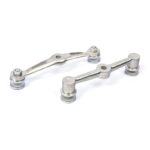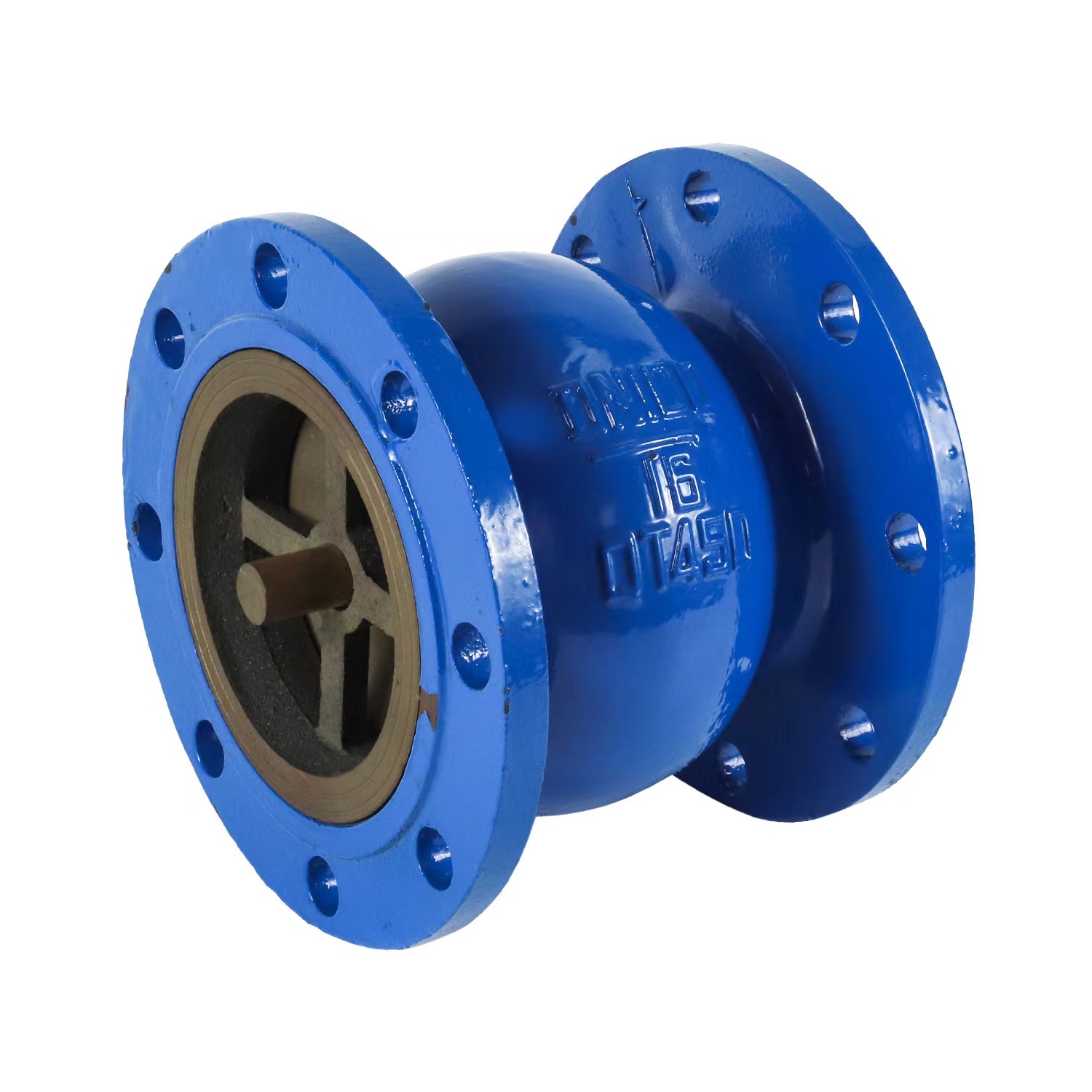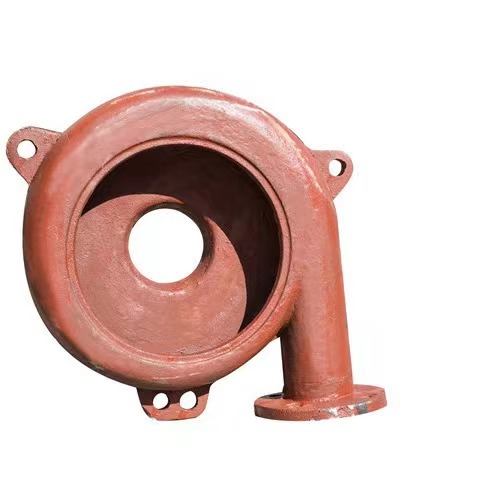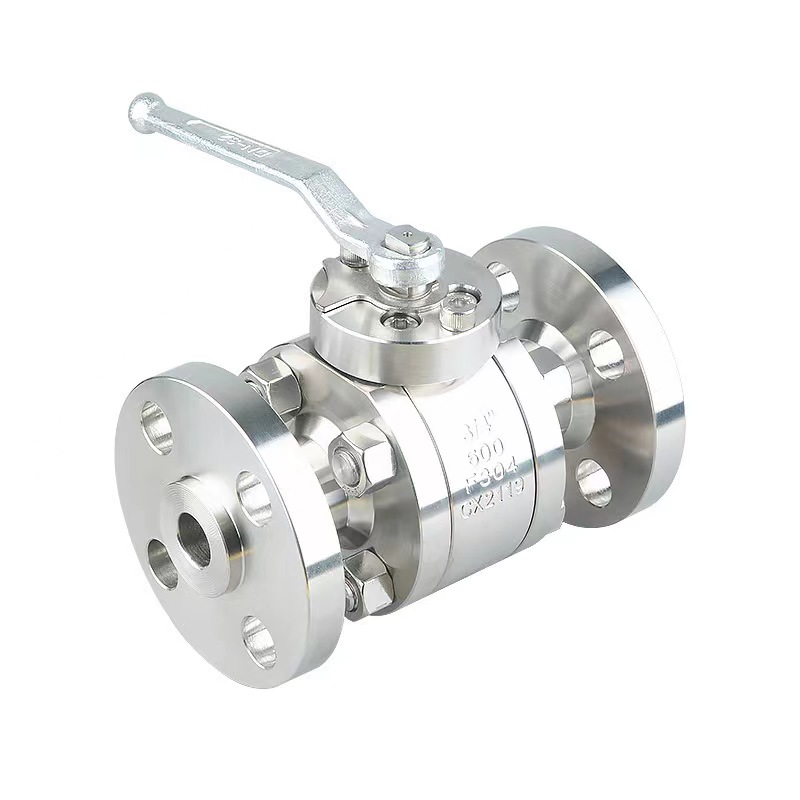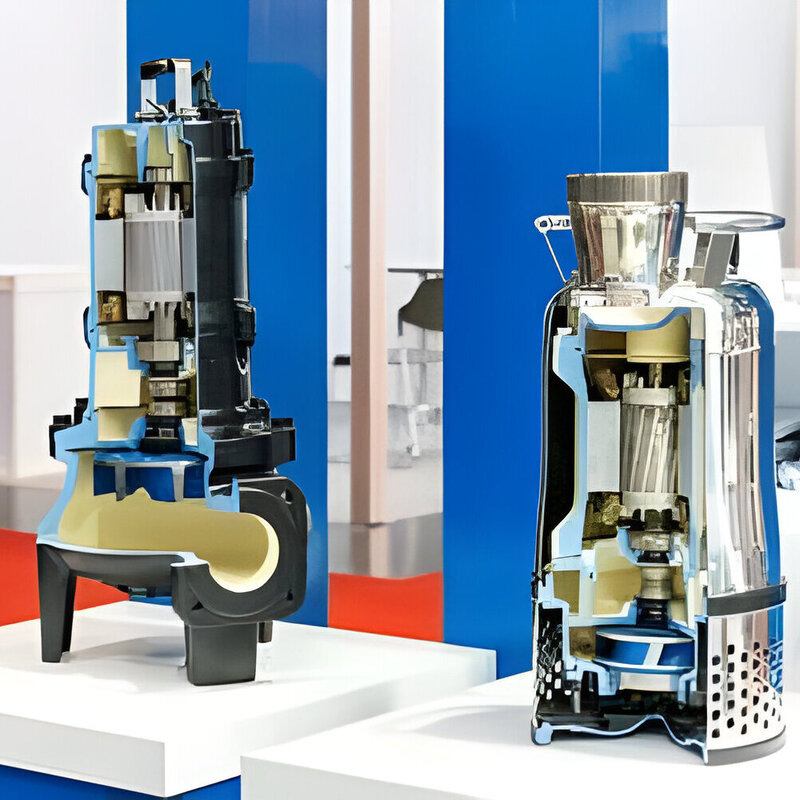Motor housings are key in the electric motor world. They protect the motor's inner parts and help it work well for a long time. In this guide, we'll look at the different types of motor housings, the materials they're made of, and where they're used.
From aluminum motor housings that are light but strong to cast iron and stainless steel, we'll cover their pros and cons. Knowing this helps you choose the best motor housing for your project. Whether it's for a new electric car, updating industrial equipment, or making a modern home appliance, this info is key.

Key Takeaways
- Motor housings are critical components that protect electric motors from environmental factors, ensuring optimal performance and longevity.
- Different types of motor housings, including aluminum, cast iron, and stainless steel, offer unique advantages based on factors like weight, durability, and corrosion resistance.
- The choice of motor housing material depends on the specific application, such as heavy-duty industrial use, lightweight electric vehicles, or energy-efficient appliances.
- Customized motor housings can be engineered to meet unique design requirements and industry-specific needs.
- Manufacturers like KT Foundry provide reliable and high-quality motor housing solutions backed by exceptional service and technical support.
Introduction to Motor Housing
The motor housing is key to any electric motor's health. It protects the motor's inside parts and helps it work well. This casing, or enclosure, keeps the motor safe from dust, moisture, and debris.
This protection is vital for the motor's parts, like windings, rotor, and stator. It keeps them safe and working right.
Definition and Importance of Motor Housing
The motor housing acts as a shield between the motor and its surroundings. It keeps people safe by blocking access to moving parts. It also guards against damage from debris or corrosion.
This protection is key for the motor's performance and life span. It's especially important in tough environments, like heavy-duty industrial settings.
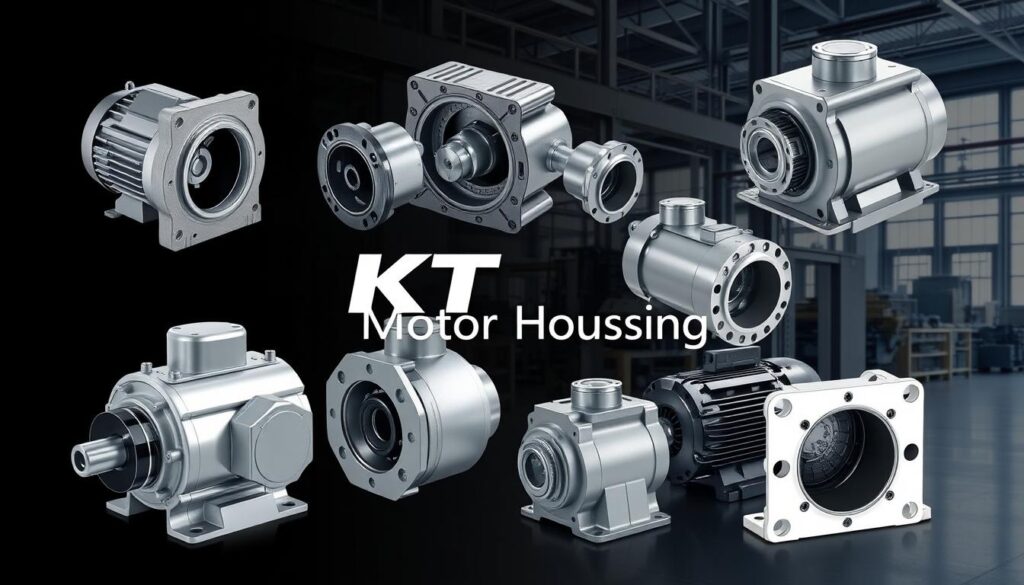
"The motor housing is the unsung hero of electric motorperformance, providing the necessary protection to ensure reliable and efficientoperation."
Types of Motor Housings
Every electric motor has a motor housing at its core. This part is key to protecting the motor's inner workings. It also boosts the motor's performance and reliability. There are many types of motor housings to choose from, each fitting different needs.
Enclosed vs. Open Motor Housings
Enclosed motor housings, like TEFC and TENV, offer strong protection against dust and moisture. They're perfect for tough environments where the motor must stay safe. On the other hand, open motor housings, or ODP, provide less protection but are cheaper and better for clean, indoor settings.
Frame Types: Cast Iron, Aluminum, and Steel Housings
Motor housings come in different materials like cast iron, aluminum, and steel. Each has its own benefits and drawbacks. Cast iron is tough and great for heavy-duty use. Aluminum is light and efficient, ideal for electric vehicles. Steel is a good mix of strength, resistance to corrosion, and affordability.
Custom vs. Standard Motor Housings
Motor housings can also be standard or custom-made. Standard ones are cheaper and easy to find. Custom designs, however, can be tailored to fit specific needs, like washdown or explosion-proof environments.
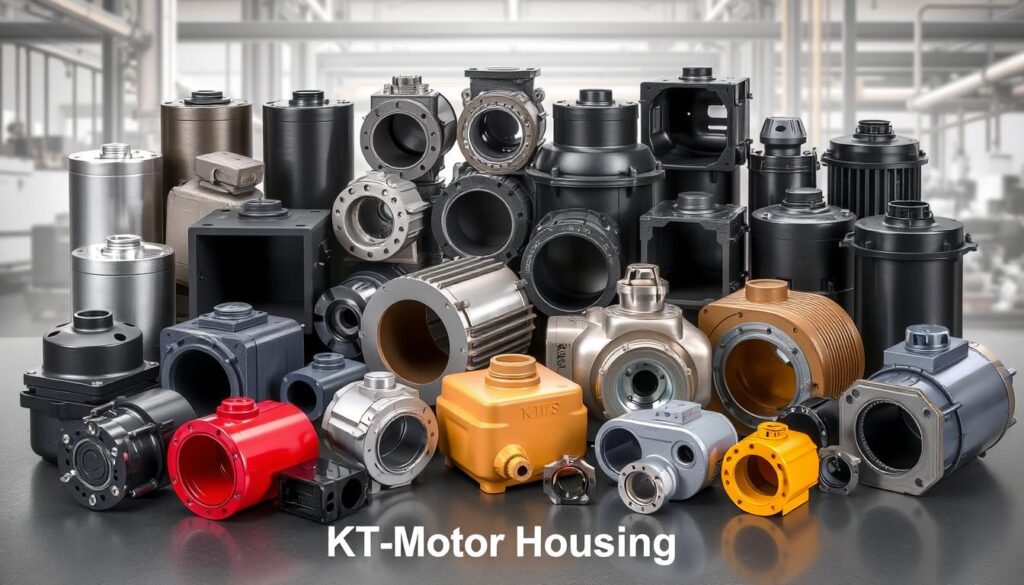
Knowing about the various motor housing options helps businesses choose the best one. This ensures the motor works well, is cost-effective, and reliable.
Materials Used in Motor Housings
Choosing the right materials for motor housings is key. At [https://kt-foundry.com/enhancing-efficiency-and-protection-with-inducer-motor-housing-solutions/], we pick the best for our customers. This ensures their motors work well and last a long time.
Aluminum: Lightweight and Efficient
Aluminum is great for motor housings because it's light and good at cooling. It's perfect for electric vehicles and light industrial machines. It keeps the motor cool, making the system more efficient.
Cast Iron: Durability and Heat Resistance
Cast iron is best for tough industrial motors. It's strong and can handle high heat. This makes it great for hard environments.
Stainless Steel: Corrosion Resistance and Strength
Stainless steel is good for places with harsh chemicals or saltwater. It's strong and doesn't rust easily. This makes it perfect for marine use and food processing.
Composite Materials and Emerging Options
Composite materials like carbon fiber are being looked at for motor housings. They could be lighter and more sustainable. They still need to be strong and protect the motor well.
| Material | Key Attributes | Typical Applications |
|---|---|---|
| Aluminum | Lightweight, efficient heat dissipation | Electric vehicles, lightweight industrial machinery |
| Cast Iron | Durability, high-temperature resistance | Heavy-duty industrial motors |
| Stainless Steel | Corrosion resistance, strength | Marine environments, food processing equipment |
| Composite Materials | Lightweight, potential for improved sustainability | Emerging applications in motor design |
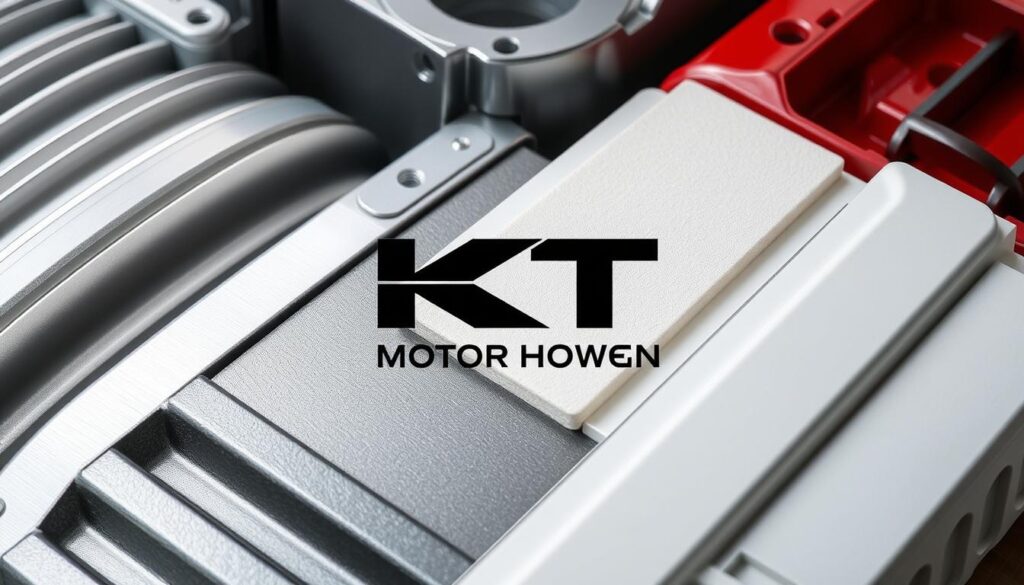
"The choice of material for a motor housing is critical in ensuring the long-term performance and protection of the motor components."
Case Studies: Motor Housing Applications
Motor housings are key in many areas, each needing something special. In heavy-duty industries, strong motor housings from cast iron or steel are used. They handle tough conditions like high heat, heavy loads, and dirt well. These tough housings keep the motor parts safe, ensuring it works well in harsh places.
Electric Vehicles and Lightweight Housings
The electric car world wants motor housings that are light and work well. They use aluminum and composites to make housings that are strong yet light. This helps electric cars go further and perform better by cutting down on weight.
Sustainable Materials in Energy-Efficient Motor Designs
There's a big push for green materials and ways to make motor housings better for the planet. Companies are using sustainable stuff and smart designs to make motors that are both good for the planet and work better. This makes motors more efficient and cuts down on harm to the environment.
"The growing demand for sustainable and energy-efficient motors has driven the need for innovative motor housing solutions that can optimize performance while minimizing the carbon footprint."
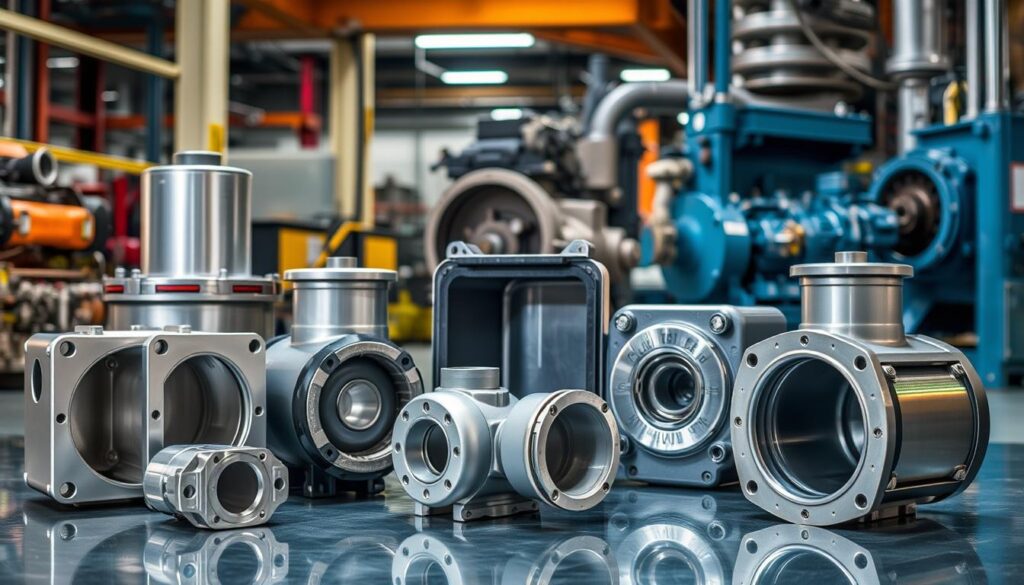
| Application | Motor Housing Requirements | Preferred Materials |
|---|---|---|
| Heavy-Duty Industrial Motors | Durability, Heat Resistance, Contamination Protection | Cast Iron, Steel |
| Electric Vehicles | Lightweight, Efficient, Improved Vehicle Performance | Aluminum, Composites |
| Energy-Efficient Motor Designs | Sustainable, Eco-Friendly, Enhanced Energy Efficiency | Recycled Materials, Advanced Composites |
Conclusion: Selecting the Best Motor Housing for Your Needs
Choosing the right motor housing is key. You need to think about the environment, cooling, cost, and performance. Knowing the strengths and weaknesses of different types and materials helps you make a smart choice. This ensures your electric motors work well, last long, and are reliable.
Summary of Key Considerations
The motor housing you pick affects your electric motor's efficiency, durability, and sustainability. The materials, frame types, and customization options are important. By considering these, you can find a housing that protects, cools, and performs well, extending your motor's life and efficiency.
Future Trends in Motor Housing Design and Materials
The industry is moving forward, with a focus on sustainable materials and better cooling. We'll see new, eco-friendly designs for various uses, from industrial motors to electric vehicle parts. Keeping up with these trends helps you make choices that meet today's needs and tomorrow's possibilities.
What is a Motor Housing and What Are Its Functions?
A motor housing serves as the protective outer shell for an electric motor, ensuring the safety and integrity of the internal components. The primary functions of a motor housing include protecting the motor from environmental factors, such as dust and moisture, and providing structural support for the motor's internal parts, including the stator and rotor. The design of the motor housing also plays a crucial role in heat dissipation, ensuring that the motor operates efficiently and within safe temperature limits.
What Are the Different Types of Motor Housings Available?
Motor housings are available in various types, primarily differentiated by their design and functionality. Common types include cylindrical housings used in small and medium electric motors, and rectangular housings typically seen in larger industrial applications. Additionally, there are specialized housings designed for specific industries, such as automotive and renewable energy, which may incorporate features to enhance performance and reliability.
What Materials Are Commonly Used for Motor Housings?
Motor housings can be constructed from a variety of materials, with aluminum and steel being the most prevalent. Aluminum is favored for its lightweight properties and excellent heat dissipation capabilities, while steel offers durability and strength. Other materials, such as die casting alloys, may also be utilized to achieve specific design requirements and quality standards.
How Do Different Materials Affect Motor Housing Performance?
The choice of material for a motor housing can significantly impact its performance and longevity. For instance, aluminum housings are typically lighter, which can enhance the overall power to weight ratio of the machine, making them ideal for applications where weight is a concern. Conversely, steel housings provide superior protection against physical damage, which is essential in rugged industrial environments.

